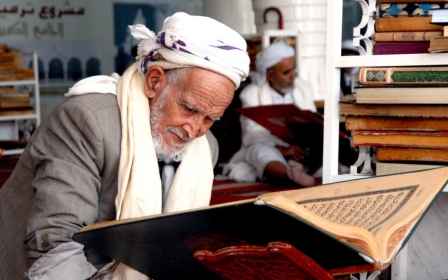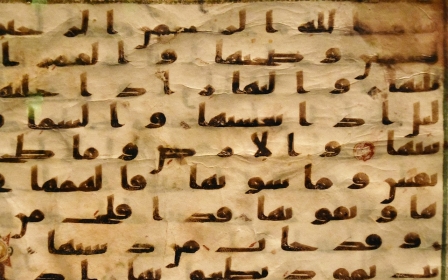
In pictures: The Egyptian who finds solace in the art of Arabic calligraphy
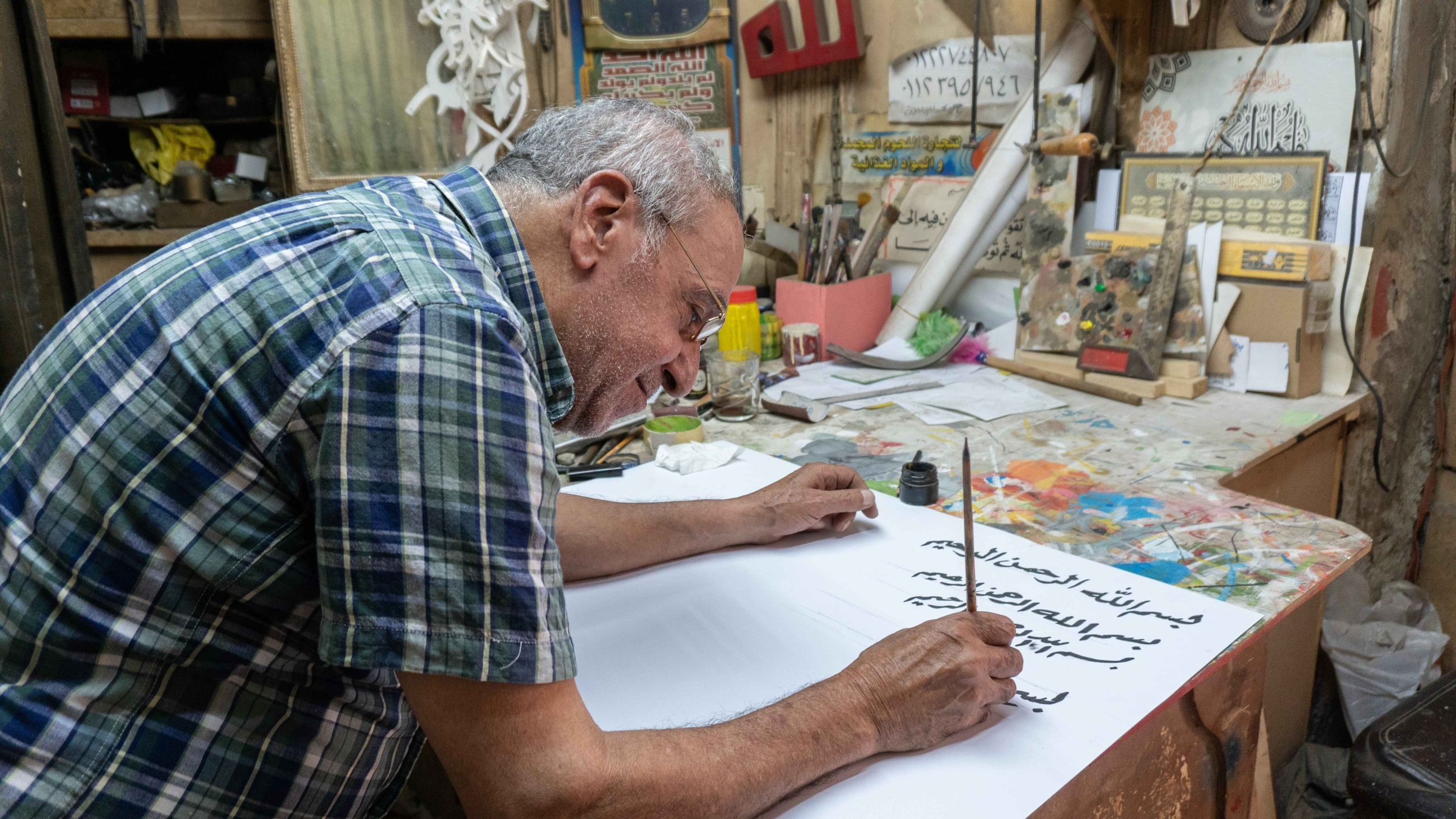
In 1972, Nagi Fahmi Abdelfattah took up a post in the Egyptian army, unaware of the extraordinary journey that awaited him. Though his stint was brief, his time in military uniform was enough to determine the path he would take in life, one in which a cherished childhood pastime turned into a lifelong vocation. "Painting and drawing have always held a special place in my heart since I was a young boy, but circumstances never allowed me the chance to pursue formal education in this field," Nagi recalled, his eyes sparkling with passion. Fate would have it that a comrade and fellow soldier was a calligrapher who wanted to expand his flourishing business in Cairo and was looking to take on a painter after his service was over. (All photos by Mohamed Osam)

Before the advent of the computer, calligraphers and painters played a vital role in Egyptian society akin to modern-day graphic designers. Their skilled hands breathed life into letters and their calligraphy was widely used in logos and posters. They were entrusted to inscribe shopfront signs and even craft captivating headline fonts for newspapers. Their artistry adorned every corner of the city.

Due to health issues, Nagi was discharged from the army before the outbreak of the 1973 war. On returning to civilian life, he teamed up with his fellow soldier, and together they immersed themselves in the world of Arabic calligraphy. "I scoured the city, acquiring every Arabic calligraphy sketchbook I could find. Days and nights melded into one as I devoted myself tirelessly to learning and perfecting my craft. I was driven by unwavering patience and unyielding persistence," Nagi said.
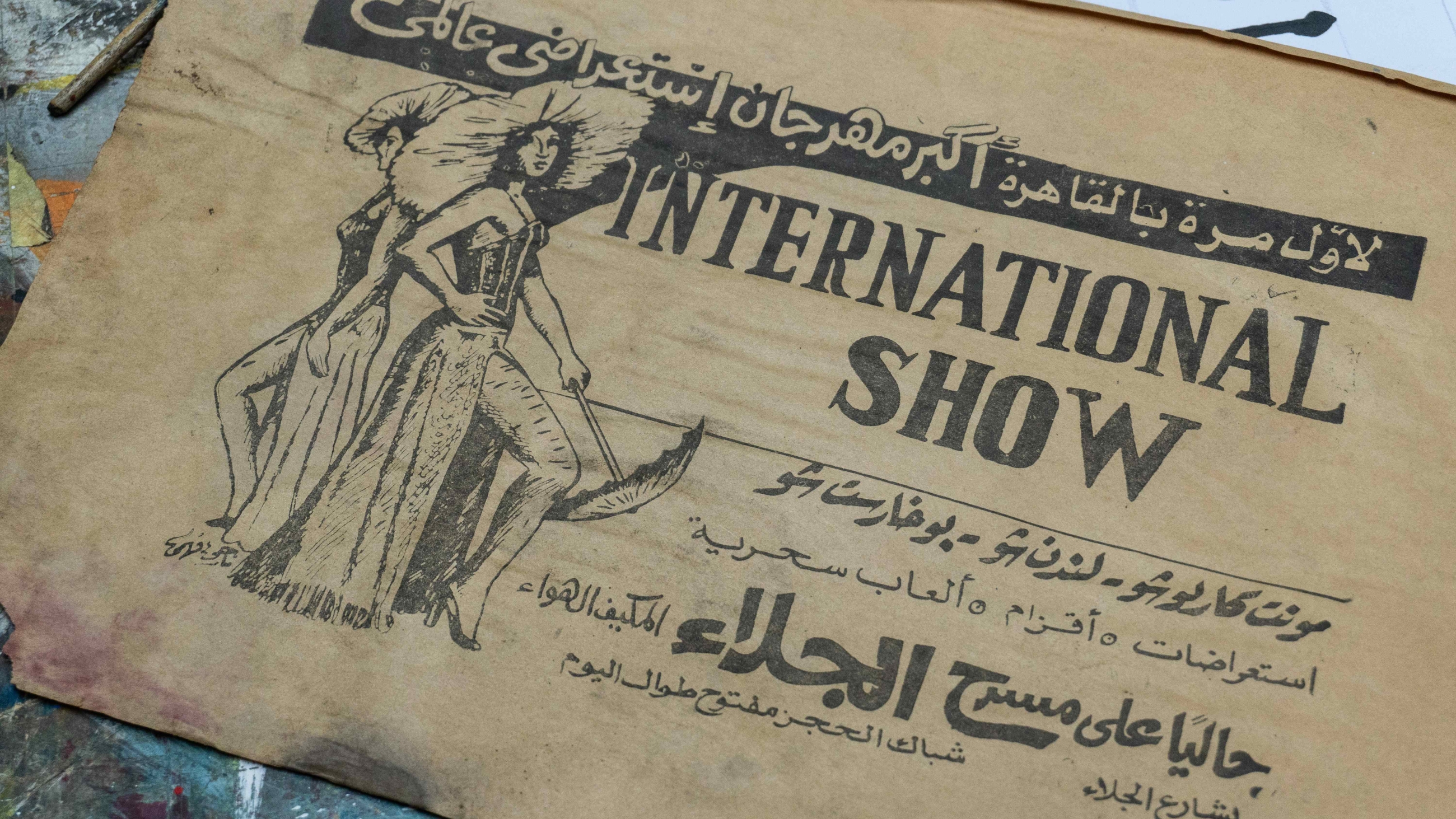
Nagi’s was soon given an opportunity to join the workhouse of another accomplished calligrapher, this time as a calligrapher himself instead of a painter. The owner, recognising Nagi's potential, nurtured his talent, bolstering his confidence by entrusting him with both large and small projects. The image above is an advert produced by Nagi for a circus taking place in Cairo.
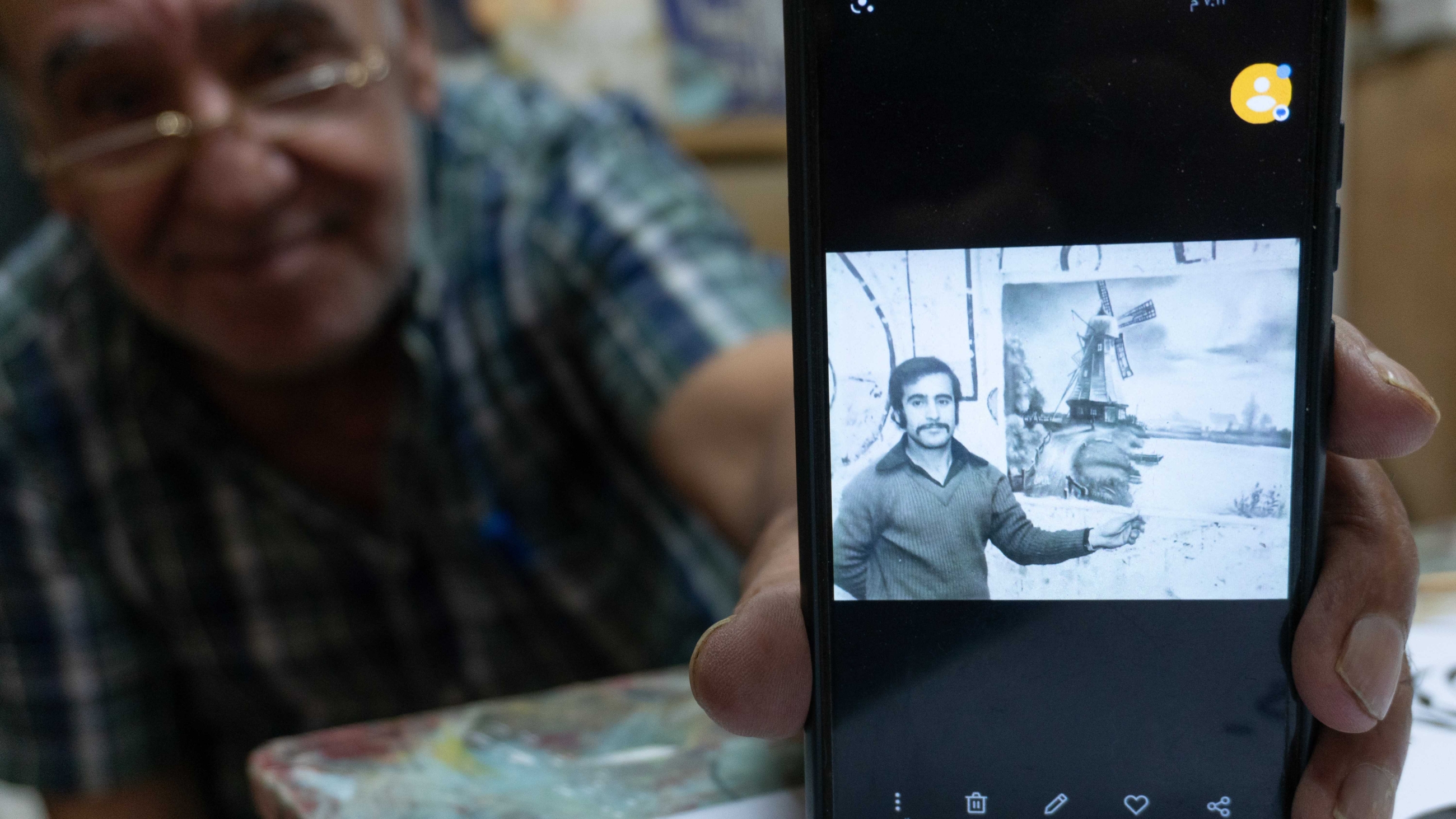
Years passed, and Nagi's artistic reputation got stronger. In 1975, he decided to set up a business of his own by opening up a modest workshop in the Al Sayeda Zeinab neighbourhood of Cairo. The image on the mobile phone is of a younger Nagi alongside one of his paintings.

Clients from diverse backgrounds came to his doorstep, from prominent politicians seeking campaign posters to bands attempting to create visionary album covers. Even circus performers and theatre troupes sought his imaginative touch, entrusting him to craft eye-catching promotional material. The image above is the logo of the Zamalek football club, which he produced for a cafe.

Nagi's commissions come in all shapes and forms. Here a client asked him to produce a calligraphic version of several chapters of the Quran (surahs) known as the "Four Quls", as well as the "Verse of the Throne". These verses speak about God's oneness and his majesty and are often put up in houses and businesses to ward off evil intent.
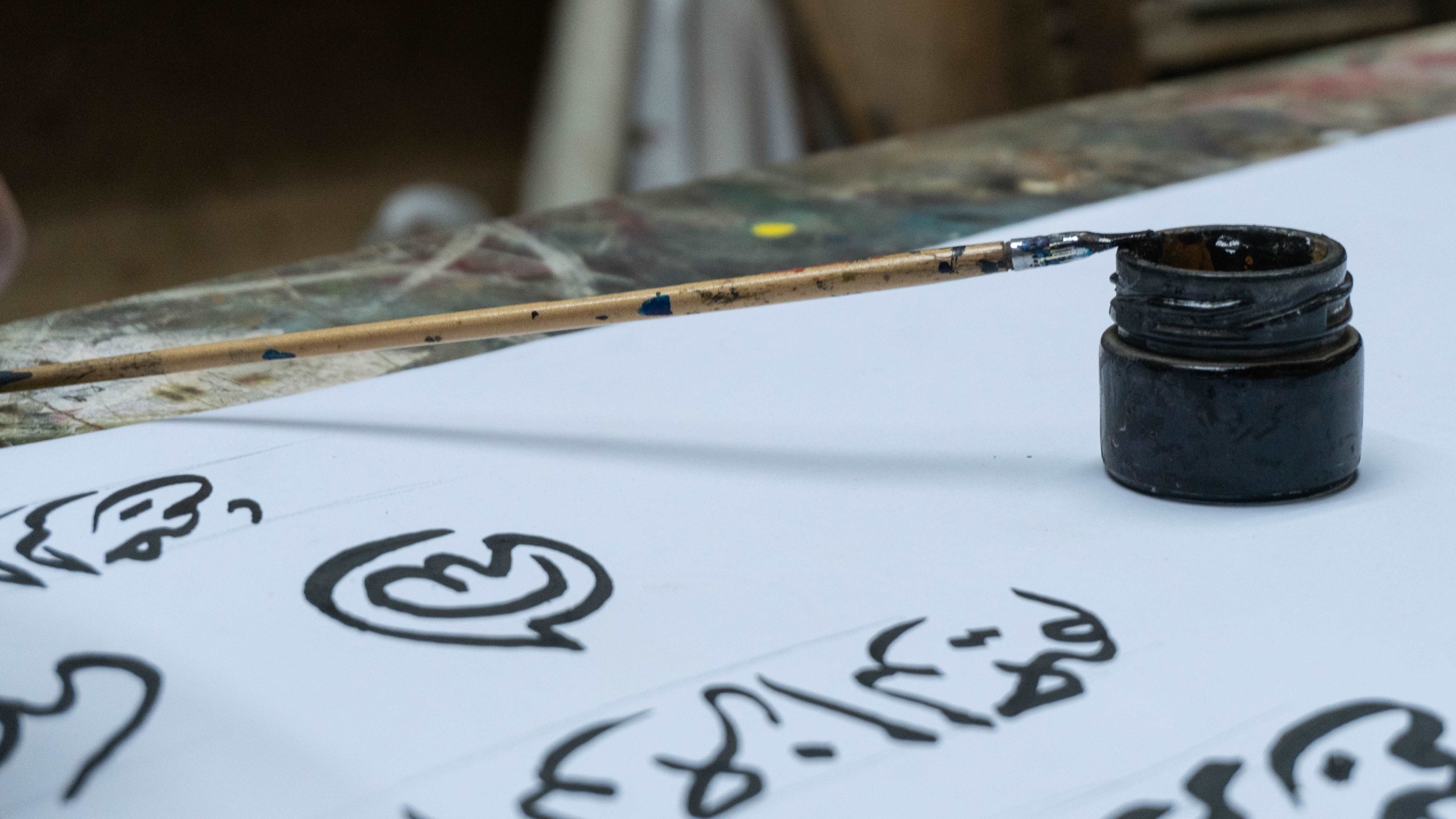
Now, at the age of 73, Nagi still finds solace and fulfilment in his beloved workshop. "This place is not just bricks and mortar; it is my sanctuary, a repository of cherished memories and untold tales that only I hold," Nagi said with a nostalgic smile.

As the world hurtles forward and the pace of technological advancement accelerates, Nagi remains open-minded about new tools and techniques. Meanwhile, his clientele, who still cherish the intricacies of hand-produced Arabic calligraphy, continue to seek his expertise in crafting handwritten manuscripts, thereby keeping alive the rich heritage of a bygone era.
Middle East Eye delivers independent and unrivalled coverage and analysis of the Middle East, North Africa and beyond. To learn more about republishing this content and the associated fees, please fill out this form. More about MEE can be found here.


